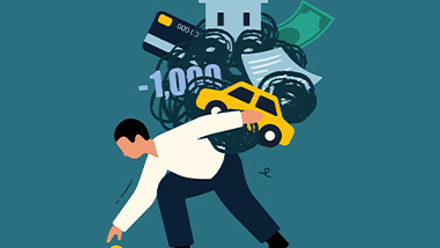Carole Daley of William Hill on building an award-winning employee share save campaign

Breaking down this barrier – making saving and investing simple for employees – was the key aim behind William Hill’s Employee Sharesave campaign. Carole Daley, reward and benefits manager at the organisation, explains how they changed their approach to communicating and promoting their scheme to improve financial wellbeing and ensure that employees knew that they didn’t need to be a financial wizard to benefit from the Sharesave plan.
Shifting financial wellbeing communications
Building an award-winning approach in any area of employee wellbeing takes time and often relies on changing perceptions, not just offering a benefit. This is exactly where the team at William Hill started in 2018, when they began to have meaningful conversations about financial wellbeing.
“We knew this was a journey. That’s why we took a phased approach over a period of time, to change colleagues’ relationship and their attitude towards their finances – to make money matters simpler,” explains Daley.
In addition to encouraging conversations around money, William Hill also appointed a financial wellbeing provider to help it change the way it engaged and educated employees. The intention was to blend financial wellbeing with the Sharesave scheme.
By 2019 the organisation was ready for its next step and underwent a communications revamp. “We overhauled how we communicate with Sharesave champions and went for a digital approach, which was more intuitive – with quick sign-up through communications and greater personalisation,” says Daley.
The team rewrote the communication materials and altered how they engaged with employees.
“We changed our materials to a strictly digital form of communication, and built a strong team of local and international [share] plan champions – upskilling their knowledge and giving them the confidence to promote the plan locally to fit their audience,” explains Daley.
Breaking down savings barriers
In 2020, all of the groundwork came together to enhance and promote the organisation’s Sharesave plan, with the aim of promoting financial wellbeing across the business.
Educating employees and boosting engagement were key priorities for Daley: “Having revamped our materials the year prior, the invitation [to the Sharesave plan] was the perfect opportunity to provide a fresh and different approach to the benefit.”
Using a pilot group of 1,500 employees, William Hill took a two-phased communications approach using nudges to supplement traditional messages.
The audience was segmented according to whether the employee was new to share plans or already an existing member, as well as by age bands and career stage.
All employees received three nudges, two were the same intro and reminder, the middle nudge was targeted according to the above segments.
Across all of the communications the focus was on saving – particularly for younger employees – where the message centred on breaking down barriers and making investing and saving simple.
Communications also emphasised that employees don’t need to save for three or five years. Even if someone leaves before that time, they will still get a savings pot at the end.
The results
The revamped approach to communicating about the Sharesave plan has been a huge success. Across the workforce of 11,000 employees, just under 2,000 of them enrolled into the plan – a participation rate of 25%. This was up from an average participation rate of 10–13%.
For the pilot group, which received nudges in addition to the revamped communications, half of the population enrolled into the scheme. Of those, 27% were new to share plans.
“I am really pleased with this because one of our key objectives was to grow participation with the aim of getting more employees to save,” comments Daly.
In particular, more than one-third of the new population who had signed up were from the 18–33 age group, which Daley was pleased with as often this cohort of employees doesn’t often engage with longer-term financial wellbeing initiatives.
Across the share plan savers, the average monthly contribution was £130 each, with total monthly savings across all participants standing at £260,000.
“We didn’t know how much average savings would be affected by the pandemic,” says Daley. “So it was interesting to review this figure, which was broadly in line with previous years and probably slightly higher.”
An award-winning formula
The combination of revamped communications, segmented nudges and a digital solution that enabled employees to sign-up to the scheme through the communications they received, earned the team at William Hill the accolade of Most Effective Communication of an Employee Share Plan from ProShare, the voice of employee share ownership in the UK.
“You need traditional communications,” says Daley. “But by using extra nudges that didn’t clash with the standard messages – they overlaid and complemented them – we were able to break down barriers and appeal to younger employees, to help them create a savings pot and improve their financial wellbeing.”
The author is Dawn Lewis, content editor at REBA.






